Showing 157–168 of 385 results
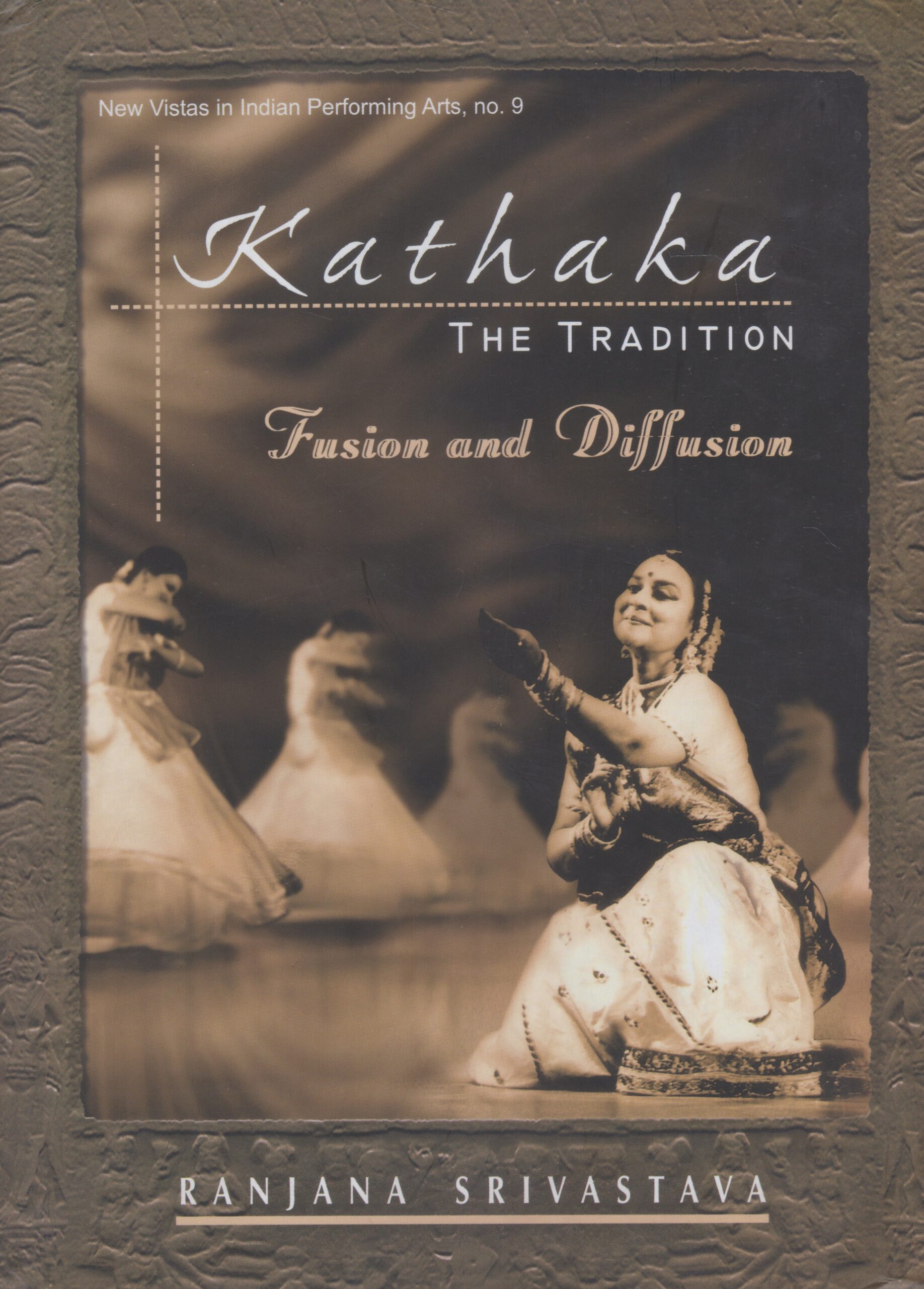
The book narrates the history of the Kathaka dance art: its origin, continuous evolution and struggle for existence from ancient to the medieval period. It discusses the influence of Kathakya Acarya, Sage Katha and his sampradaya on Kathaka, besides generic similarities between Rasalila and present-day Kathaka.
The book traces the history of Kathaka from ancient to the medieval period: its origin and continuous evolution in a struggle for existence through a process involving fusion, diffusion and adaptation. It studies its etymological meaning in a painstaking effort which involves a discussion on the influence of Kathakya Acarya, Sage Katha and the generic similarities between Rasalila, Hallisaka, Carcari, Rasa, and present-day Kathaka. It shows that Kathaka has an ancient origin and is an indigenous Indian dance. It deals with the three distinct sections that form the present-day Kathaka. Surveying a host of religious and secular literature including the Natyashastra, the Abhinaya Darpana and the Sangita Ratnakara and referring to sculptural reliefs from temples and illustrations from manuscripts including the Akbar-Nama, it undertakes a detailed and illuminating study of gestures, postures, movements and stances of Kathaka. An attempt to help readers gain a better insight into the Kathaka dance, the volume will interest practitioners and lovers of classical dance forms of India.

This work studies the scientific and technological contents of the Arthasastra. It makes inquisitive analyses to extract the latest scientific essence of observational facts, operational techniques, perceptual awareness of discriminal and classificatory propositions and hypotheses in fields like mineralogy, gemmology, mining, metallurgy, agriculture, architecture, civil engineering and environment, dealt within the treatise.
A Sanskrit treatise of the fourth century bc, Arthashastra is, ostensibly, the world’s oldest surviving document of its genre. Written by Kautilya (also known as Vishnugupta and Chanakya): the astute Brahmin preceptor and prime minister of Chandragupta Maurya, it is now widely recognized as a classic on statecraft, including a discussion of contemporary Indian polity, political theories, administrative mechanisms, war and peace, and a variety of other subjects. Though a lot has already been written on Kautilya’s world view of statecraft, polity and kindred themes, this book is veritably the first ever effort to examine Arthashastra from the standpoint of modern science and technology. Analysing meticulously layers after layers of Kautilya’s complex sutras (aphoristic statements), the author unfolds scientific perceptions, hypotheses, operational techniques and other significant dimensions of several ancient Indian disciplines, like minerology, mining, gemmology, metallurgy, agriculture, town planning, civil engineering, and even environment. Himself a professional geologist, Sunil Sarma has adopted the current normative techniques for the scientific evaluation of Arthashastra, while using all through modern idiom to spell out its scientific content. An unbiased study based on Sarma’s honest, altogether fresh interpretation of Arthasastra’s archaic Sanskrit language and its peculiar scientific terminology, the book will fascinate Indologists, historians of science, and many area-specialists.
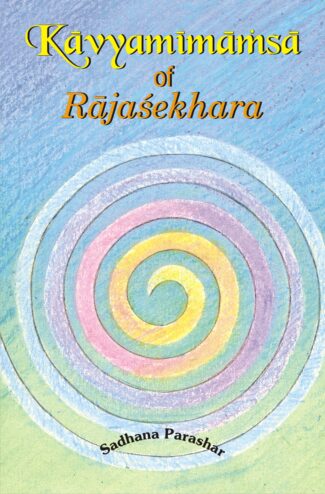
Written sometime during 880-920 ad by Rajasekhara: an eminent poet, this first English translation of Kavyamimamsa is a kind of practical treatise for poets: kavisiksa manual highlighting, all possible attributes that go into the making of a good poet and a good poetic composition.
As a body, Sanskrit writings unfold Indias millennia-long, almost unbroken intellectual tradition: not only of philosophy and grammar, but of literary theory as well. The concepts and critical theories, which the Sanskrit poeticians advanced or the issues they sought to address, inhere both universal appeal and validity. And, with certain modifications, these can well live up to the demands of modern literature. In this long and powerful tradition of Sanskrit literary theory that marked a definitive begining with Bharatas Natyashastra (first century ad), Kavyamimamsa is a monumental work. Written sometime during 880-920 ad by Rajashekhara: an eminent poet, dramatist and critic, it is a kind of practical treatise for poets: kavishiksha manual highlighting, as it does, all possible attributes that go into the making of a good poet and a good poetic composition. Among other relevant aspects, Rajashekhara also includes here a systematic exposition of the views/opinions of his predecessors, with illustrations of the literary practices of various times and climes put down after careful empirical observation. Now, when there is a growing scholarly interest in the study of Sanskrit literary theory and how it is positioned vis-a-vis the Western critical tenets, Dr. Sadhana Parashar brings Rajashekharas classic within everyones reach offering the first-ever, complete English translation of Kavyamimamsa, with its original Sanskrit text and comprehensive explanatory notes. For sure, it is invaluable to the scholars of linguistics and literary criticism.

Written sometime during 880-920 ad by Rajasekhara: an eminent poet, this first English translation of Kavyamimamsa is a kind of practical treatise for poets: kavisiksa manual highlighting, all possible attributes that go into the making of a good poet and a good poetic composition.
As a body, Sanskrit writings unfold Indias millennia-long, almost unbroken intellectual tradition: not only of philosophy and grammar, but of literary theory as well. The concepts and critical theories, which the Sanskrit poeticians advanced or the issues they sought to address, inhere both universal appeal and validity. And, with certain modifications, these can well live up to the demands of modern literature. In this long and powerful tradition of Sanskrit literary theory that marked a definitive begining with Bharatas Natyashastra (first century ad), Kavyamimamsa is a monumental work. Written sometime during 880-920 ad by Rajashekhara: an eminent poet, dramatist and critic, it is a kind of practical treatise for poets: kavishiksha manual highlighting, as it does, all possible attributes that go into the making of a good poet and a good poetic composition. Among other relevant aspects, Rajashekhara also includes here a systematic exposition of the views/opinions of his predecessors, with illustrations of the literary practices of various times and climes put down after careful empirical observation. Now, when there is a growing scholarly interest in the study of Sanskrit literary theory and how it is positioned vis-a-vis the Western critical tenets, Dr. Sadhana Parashar brings Rajashekharas classic within everyones reach offering the first-ever, complete English translation of Kavyamimamsa, with its original Sanskrit text and comprehensive explanatory notes. For sure, it is invaluable to the scholars of linguistics and literary criticism.

Swami Muni Narayana Prasad renders a superbly novel analysis of this Upanisad in the backdrop of recent developments in various scientific disciplines and attempts to show that mysticism is a corollary to scientific investigation.
Kenopanishad is one of the major Upanishads containing the quintessence of the teachings of the ancient Indian seers. It represents their spiritual quest to apprehend the nature of the Ultimate Being and comprises the yearning for the wisdom that explains the relation of human life to the world and the reality. The beauty of this Upanishad is greatly enhanced by the dialogue between the disciple and the preceptor, through which it continues its quest. Swami Muni Narayana Prasad, the renowned scholar on the Upanishadic tradition, renders a superbly novel analysis of this difficult text in the light of the modern mans need for value and spiritual security making a strikingly beautiful synthesis between the ancient and the modern. Presenting the teachings of Kenopanishad in the backdrop of the recent developments in the area of physics, chemistry, biology and psychology is no mean task and constitutes the exclusiveness of this book. The disciplines of science in the pursuit of the basic truth stumble at some invisible and unconceptualisable Reality, which may be another name for mysticism. Through very cogent arguments the author has successfully vindicated that mysticism is a corollary to scientific investigation and not opposed to it. The authors prolonged association with the Upanishadic thought along with the insight he received from the works of his preceptors Narayana Guru and Nataraja Guru makes the commentaries of this text stimulating and unique. The original Sanskrit text along with the Roman transliteration and English paraphrasing enhance the value of this monumental commentary.
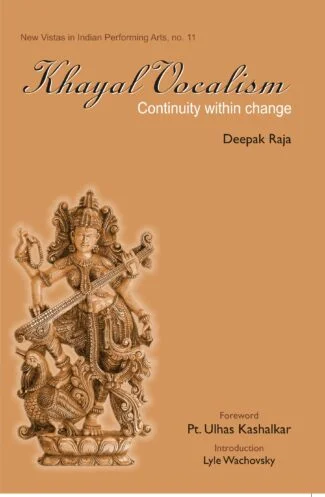
The book presents stylistic perspectives on the music of nineteen modern and contemporary Khayàla vocalists representing five important legacies (Gharànàs) which have guided vocal music for about 200 years in India. The book makes complex musicological concepts accessible to even non-academic readers.
Khayala Vocalism: Continuity Within Change presents stylistic perspectives on the music of nineteen modern and contemporary Khayala vocalists, representing various legacies which have guided vocal music for about 200 years. The book is the result of over five years of research, involving the painstaking analysis of over 500 recordings spanning almost a hundred years of Khayala vocalism. The nineteen vocalists are classified into five stylistic legacies, based on their history of tutelage and the stylistic tendencies evident in their music: Agra legacy, Gwalior-Agra confluence, Jaipur-Atrauli legacy, Kairana legacy, and Patiala legacy. Written by an author of impeccable credentials as a musician, researcher and writer, the book contains seven sections. While the first section serves as an introduction to the Khayala genre and to the various Gharanas, the last presents an annexure containing the various Khayala forms, a glossary of non-English terms rendered in italics, and an index. The intervening five sections deal with the history and stylistics of the five legacies and the music of the vocalists belonging to them. The book makes complex musicological concepts accessible to non-academic readers and contributes significantly to widening the understanding of contemporary trends in Khayala vocalism.

The book presents stylistic perspectives on the music of nineteen modern and contemporary Khayàla vocalists representing five important legacies (Gharànàs) which have guided vocal music for about 200 years in India. The book makes complex musicological concepts accessible to even non-academic readers.
Khayala Vocalism: Continuity Within Change presents stylistic perspectives on the music of nineteen modern and contemporary Khayala vocalists, representing various legacies which have guided vocal music for about 200 years. The book is the result of over five years of research, involving the painstaking analysis of over 500 recordings spanning almost a hundred years of Khayala vocalism. The nineteen vocalists are classified into five stylistic legacies, based on their history of tutelage and the stylistic tendencies evident in their music: Agra legacy, Gwalior-Agra confluence, Jaipur-Atrauli legacy, Kairana legacy, and Patiala legacy. Written by an author of impeccable credentials as a musician, researcher and writer, the book contains seven sections. While the first section serves as an introduction to the Khayala genre and to the various Gharanas, the last presents an annexure containing the various Khayala forms, a glossary of non-English terms rendered in italics, and an index. The intervening five sections deal with the history and stylistics of the five legacies and the music of the vocalists belonging to them. The book makes complex musicological concepts accessible to non-academic readers and contributes significantly to widening the understanding of contemporary trends in Khayala vocalism.
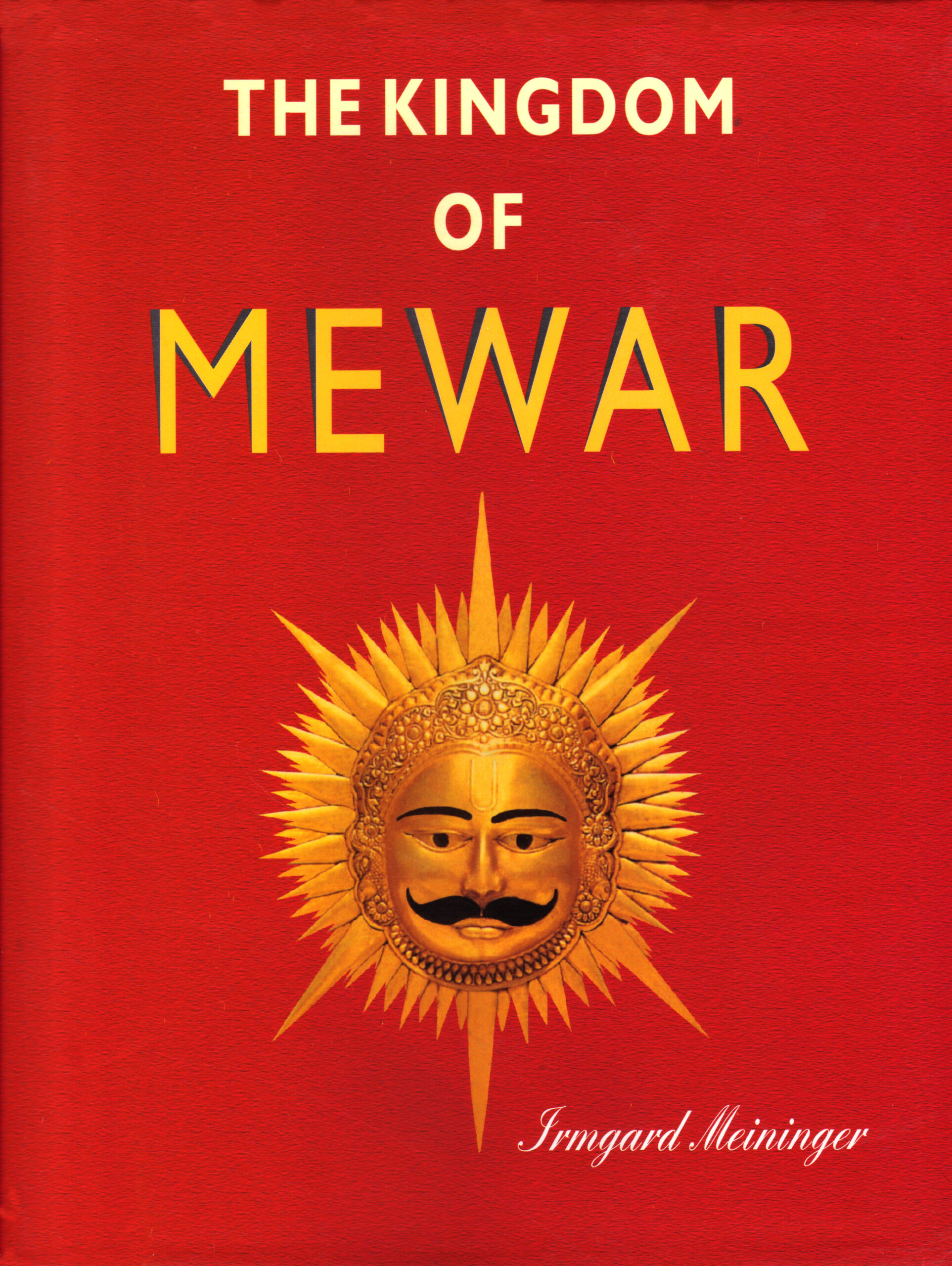
Supported by beautiful illustrations, the study reconstructs the glorious history of the Rajput house of Mewar, perhaps the worlds oldest ruling family. It recounts its heroic battlefield engagements and examines its artistic and literary achievements.
A Premier princely state of Rajsthan, the erstwhile Rajputana (northwest India), till its merger into the Union territory in 1948, Mewar has been celebrated in history and legend. In this far-famed region are best represented not only the Rajput chivalry and high sense of honour, but also their arts, architecture, and fabulous cultural traditions. Developed from the authors four-year long intensive research, the book tries to reconstruct the unparalleled, glorious history of (perhaps) the worlds oldest ruling family: the house of Mewar now called the clan of Sisodias, in earliest times Guhilots. Tracing chronologically the entire course of events since their first known ancestor, Guhil (ad 566), Irmgard Meininger here unfolds a compelling story of brave Rajput men and women, with an exaggerated sense of honour, pride and independence the story of their triumphs and tragedies, and simultaneously of palace intrigues and rivalries, and of supreme sacrifies and treacheries. And yet, in the main, it is an exciting story of Mewars heroic resistance: first to Afghan/Arab adventures and Delhi Sultans and, in the later days, to the Mughal imperialists. Weaving into her narrative the legendary episodes around Maharani Padminis fabulous beauty, the dread rite jauhar, Panna Dais unique loyalty, and Princess Miras bhakti, among others, the author also attempts to show how Mewar has been the repository not only of old Hindu traditions, but of the enchanting Rajput culture as well, and how Rajputs, notwithstanding their endless engagements in the battlefield, were great patrons of art, architecture, literature and music. Supported by numerous beautiful illustrations, bibliographic references and a glossary of non-English words, the book will fascinate anyone interested in India, particularly Rajasthan: whether as an inquisitive reader, tourist, hostorian, or a connoisseur of art.
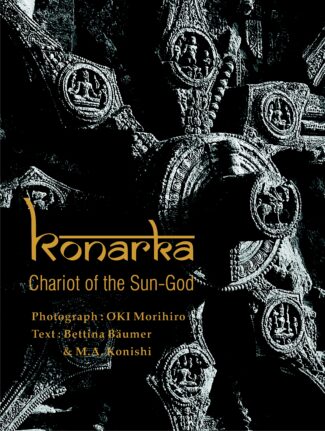
On the UNESCO List of World Heritage Sites, The Sun Temple of Konarka in Orissa represents the unique beauty and harmony of architecture and sculpture combined. The splendid photographs of the renowned Japanese photographer Oki Morihiro provides both, a visual delight and a scholarly insight and introduction to this great monument of Orissa.
One of the greatest treasures of Indian Temple architecture and on the UNESCO List of World Heritage Sites, The Sun Temple of Konarka on the East coast of Orissa stands as a witness to the cult of Surya. Even in its dilapidated condition it represents the unique beauty and harmony of architecture and sculpture combined. The present book attempts a fresh approach in understanding its symbolism. The splendid photographs of the renowned Japanese photographer Oki Morihiro bring out the grandeur of the conception of the chariot of the Sun God, and the excellence of its sculptures with delightful details. The volume is introduced by two scholars in the fields of Orissan temple architecture and archaeology. Bettina Bäumer in her introduction approaches the temple with a new interpretation, based on the Saura, Vedic and Tantric traditions, throwing light on its symbolism and its mystical dimension. M.A. Konishi places the temple in its historical and geographical context and its importance as a World Heritage. The book provides both, a visual delight by the excellent photographs, and a scholarly insight and introduction to this great monument of Orissa. It can well serve as a guide to understanding and appreciating the temple of Konarka.
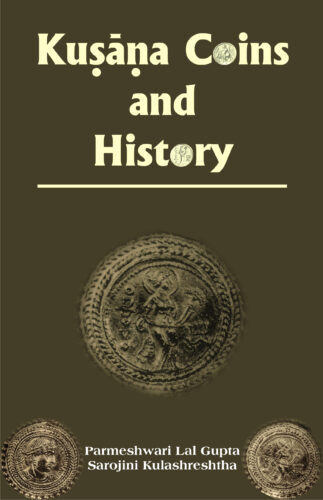
Dr. P.L. Gupta examines myriad coins of the Kusanas to convincingly resolve the chronological puzzles of these Indo-Scythian kings from their rise in mid-2nd century ad to their extinction in ad 370.
The scions of a Central Asias nomadic tribe, (called Yueh-chi), KUSHANAS descended upon the plains of northern India sometime around the first century after Christ. And gradually built a great, vastly extensive empire in the Yamuno-Gangetic region. But, owing to a marked deficiency of indigenous literary sources, Kushana history has continued to be the sport of conjecture. Or, for the last 200 years or so, an area of chroniclers debate, involving scholars: both Indian and European. A numismatist of international renown, Dr. P.L. Gupta examines myriad coins of the Kushanas, including some of the very recent finds, to convincingly resolve the chronological puzzles of these Indo-Scythian kings: from their very rise in mid-second century ad to their final extinction in circa 370 ad. Corroborating the conclusions of his lifetime research on coins, with inscriptional material, he elicits fresh evidence on various important aspects of Kushana history: ranging from span of their era to the domains of their political authority. Barring the inclusion of two papers, written by Dr. Sarojini Kulashreshtha, this volume is an exquisite presentation of Dr. Guptas writings on numismatics and related historical aspects. Now offered with highly representative visual material, extensive bibliographic references, and an elaborate introduction, these papers, when pieced together, evolve a stimulating framework for the scholars working on Kushana history.
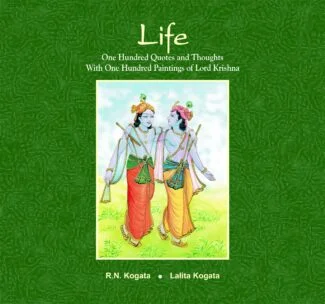
This publication with 100 quotes each supported by a thought provoking painting aims at making one realize that life is not as difficult as it seems if lived in the right spirit and a dignified way that encompasses love, kindness, care and compassion.
This publication with 100 quotes each supported by a thought provoking painting aims at making one realize that life is not as difficult as it seems if lived in the right spirit and a dignified way that encompasses love, kindness, care and compassion.

Dr. George Victor studies comprehensively Sankaracaryas teachings on Vedanta his views on scripture, perception and inference as pramanas or standards of knowledges; his explanations of the relation between Brahman and atman, Brahman and äsvara, maya and the world; and his concepts of jnana marga, karma marga and moksa.
Vedanta is recognised as the leading philosophy of the Vedic tradition. A major proponent of Vedanta was Shankaracarya who laid the basis for the propagation of Vedanta before the beginning of the Middle Ages. His contribution has been so immense and significant that often Vedanta has been interpreted as synonymous with Advaita Vedanta of Shankara.
| There are no products |